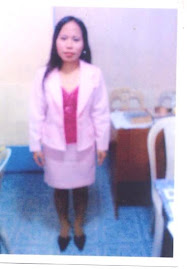Cover letter
A cover letter or covering letter or motivation letter or motivational letter or letter of motivation is a letter of introduction attached to, or accompanying another document such as a résumé or curriculum vitae.
For employment
Job seekers frequently send résumés or employment applications as attachments to a cover letter, by way of introducing themselves to recruiters or prospective employers and indicating their interest in the positions. Employers may look for individualized and thoughtfully written cover letters to screen applicants who are not sufficiently interested in their position or who lack the required writing skills. A cover letter is an accompanying letter that introduces you and your resume to a potential employer. You can send a cover letter with every resume you submit. A cover letter should not be longer than one page in length and contain 2 to 3 short paragraphs. There are three types of cover letters:
• The application letter which responds to a known job opening
• The prospecting letter which inquires about possible positions
• The networking letter which requests information and assistance in your job search
Format
Cover letters are generally one page at most in length, divided into a header, introduction, body, and closing.
• Header. Cover letters use standard business letter style, with the sender's address and other information, the recipient's contact information, and the date sent after either the sender's or the recipient's address. Following that is an optional reference section (e.g. "RE: Internship Opportunity at Global Corporation") and an optional transmission note (e.g. "Via Email to jobs@example.net"). The final part of the header is a salutation (e.g., "Dear Hiring Managers").
• Introduction. The introduction briefly states the specific position desired, and should be designed to catch the employer's immediate interest.
• Body. The body highlights or amplifies on material in the resume or job application, and explains why the job seeker is interested in the job and would be of value to the employer. Also, matters discussed typically include skills, qualifications, and past experience. If there are any special things to note such as availability date, they may be included as well.
• Closing. A closing sums up the letter, and indicates the next step the applicant expects to take. It may indicate that the applicant intends to contact the employer, although many favor the more indirect approach of simply saying that the applicant will look forward to hearing from or speaking with the employer. After the closing is a valediction ("Sincerely"), and then a signature line. Optionally, the abbreviation "ENCL" may be used to indicate that there are enclosures.
Other uses
Cover letters may also serve as marketing devices for prospective job seekers. Cover letters are used in connection with many business documents such as loan applications (Mortgage loan), contract drafts and proposals, and executed documents. They may serve the purpose of trying to catch the reader's interest or persuade the reader of something, or they may simply be an inventory or summary of the documents included along with a discussion of the expected future actions the sender or recipient will take in connection with the documents.
Monday, June 29, 2009
Subscribe to:
Post Comments (Atom)










.jpg)







No comments:
Post a Comment